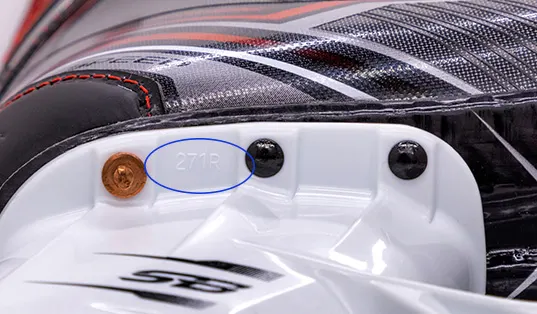Popular Player Skates
See more Popular Player Skates
Bauer Supreme M5 Pro
107 Available

Bauer Vapor X4
109 Available

Bauer Vapor 3X
211 Available

Bauer Vapor Hyperlite 2
120 Available

Bauer Supreme M4
201 Available

Bauer Supreme Mach
162 Available

Bauer Supreme 3S
198 Available

Bauer Supreme M3
69 Available

Bauer Vapor X3.7
45 Available

Bauer Supreme Shadow
57 Available

Bauer Ns
97 Available

Bauer Supreme
142 Available

Bauer Supreme 2S Pro
93 Available

Bauer Vapor X2.9
62 Available

Bauer Vapor 1X
82 Available

Bauer Vapor X3.5
58 Available

Bauer Supreme M1
36 Available

Bauer XLP
78 Available

Bauer Supreme Elite
59 Available

Bauer Supreme Matrix
56 Available

Bauer Vapor X Shift Pro
60 Available

Bauer Vapor
89 Available

Bauer Supreme S160
60 Available

Bauer Vapor X Select
36 Available

Bauer Vapor x40
25 Available

Bauer Supreme 190
21 Available

Bauer Supreme S180
11 Available

Bauer Supreme Comp
39 Available

Bauer Vapor X350
12 Available

Bauer Supreme Select
13 Available

Bauer Nexus N2700
30 Available

Bauer Nexus Elevate
15 Available

Bauer Supreme 3000
16 Available

Bauer Vapor X LTX Pro
40 Available

Bauer Vapor X Velocity
58 Available

Bauer Supreme S25
34 Available

Bauer Supreme 1S Pro
25 Available

Bauer Vapor 1
45 Available

Bauer Supreme One Matrix
6 Available

Bauer Nexus Havok
8 Available

Bauer Ignite Pro
18 Available

Bauer Nexus 2900
2 Available

Reebok RibCor Pump
8 Available

Bauer Supreme 6000
1 Available

Bauer Supreme One70
5 Available

Bauer Supreme One80
14 Available

Bauer Vapor VOLT
7 Available

Bauer Vapor X:50
7 Available

Bauer Vapor X Rival
3 Available
Shop by Age Group
Senior Hockey SkatesSeniorIntermediate Hockey SkatesIntermediateJunior Hockey SkatesJuniorYouth Hockey SkatesYouth
96 Results

































